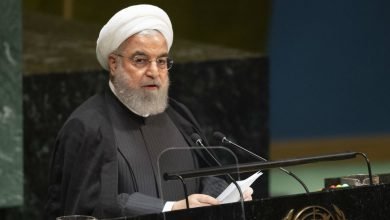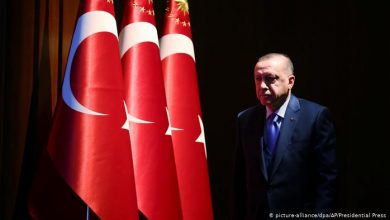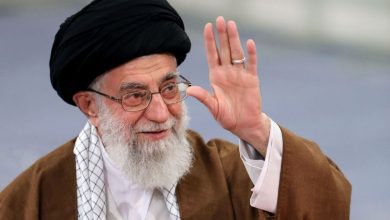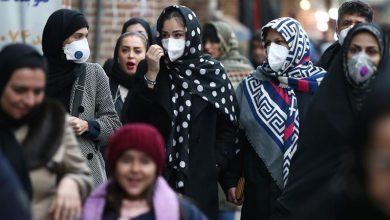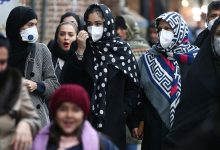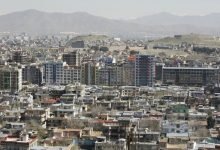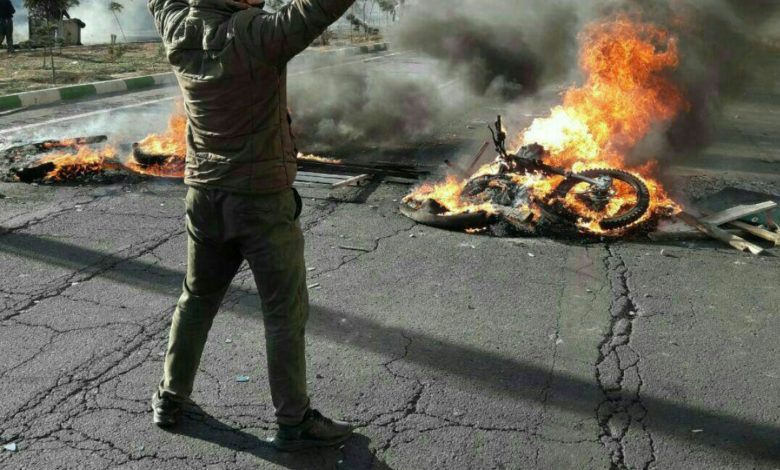
Protesters took to the streets of Iran on Nov. 15 after oil prices soared by as much as 50%.
Oil prices remained unchanged despite regular yearly inflation rates of as high as 10-30%. Though subsidies were needed, the budget balance saw considerable deficits due to the direct financial transfers.
Public debt became unsustainable, reaching 30%. The long awaited price hike was announced Nov. 14 with the decision of the Supreme Council of Economic Coordination of Iran, led by President Hassan Rouhani.
The reinstatement of U.S. sanctions, following Washington’s withdrawal from the Joint Comprehensive Plan of Action, or the Iran nuclear deal, on May 8, 2018, really hurt the economy.
Though the sanctions did not take effect until November 2018, negative projections for Iran’s economy began surfacing in January 2018 when U.S. President Donald Trump set demands that were hard to meet for the continuation of the deal.
Starting in early 2018, several macroeconomic indicators such as economic growth, unemployment and inflation, deteriorated. Iran’s economy contracted 4% in 2018 and is expected to contract by another 9.5% during 2019.
The currency plummeted to record lows in the past 22 months. In January 2018, $1 dollar was equal to ~4,000 Iranian toman, however, free market rates absolutely exploded in October 2018 and the exchange rate shot up to a whopping 17,000 Iranian toman per dollar.
The currency was able to slowly recover, starting ar the end of 2018, down to 12,000 toman. This nevertheless means the toman lost more than two-thirds of its value since January 2018.
The foreign currency crisis in Iran triggered an increase in inflation as well. The inflation rate dropped from 40% to 8% in Rouhani’s first term – between 2013 and 2017. However, the increasing foreign exchange rates were passed on to prices; the inflation rate rose sharply to 50% and food prices rose by 70%.
Iran has a young population: The average age is around 28. Another 1 million people are looking to enter the workforce each year, which would only be possible with a 6 – 7% economic growth. However, unemployment, is on the rise in Iran due to the lack of investments.
More than 40% of college graduates are unemployed. Thus, the young population is a big part of protests, which are called “bread riots” or “youth riots.”
Fundamental macroeconomic indicators draw a pessimistic picture of the future of the economy and people in the streets are feeling more deeply each day because or the sad state of affairs.
The protests are sociologically different from earlier cases. The post-election protests in 2009 and the 2017-2018 protests attracted mostly middle-class Iranians. Both of these protests were conducted in various cities in Iran but these protests were not socio-economic issues-oriented.
People marched through the city centers and carried out large scale but mostly non-violent protests.
Protests in the last two week were also multi-city in nature. However, instead of gathering in the city centers, protesters marched in small groups of 100 to 1,000 people in various districts. The densities were especially high in poor neighborhoods.
In addition, the violence level of the protests in ethnic and religious minority areas of Khuzestan and Kurdistan were substantially higher compared to previous protests.
Most people who have lost their lives were from these regions. The fact that the protesters are now also damaging public and private property shows under just how much pressure the public is under because of political and economic problems. Unless these problems are solved or relieved and the Iranian public finds hope to break out of the downward “spiral, it seems protests will continue to damage the Iranian state.
According to Iranian officials, the U.S. was secretly involved in the protests. Officials reported that the protesters were more reckless than ever because they have set fire to gas stations, banks and vehicles. It was also said that some protesters were using firearms in certain areas. Such acts used to be uncommon.
There are protests all over the world and many states have to try and cope with them. The situation in Iran is unique in one way: the government shut down all internet access to prevent protesters from organizing.
Internet-based social media platforms are being criticized for cooperating with Western governments to help suppress riots but not with less developed countries.
The government completely shut down all internet acess to remove this risk. Access was forbidden for almost a week throughout the country, which proved to be very effective for suppressing riots.
The clock is ticking against Iran. Structural issues and U.S. sanctions are continuing to damage the country.
The U.S. is expecting to get Iran to the negotiating table as the Islamic Republic would not be able to withstand sanctions and pressure much longer.
Iran is looking to minimize its losses, establish as much control as possible internally and dissuade other countries from taking steps against it, in hopes the U.S. might decide to rejoin the JCPA in case the Trump is not re-elected in 2020.


